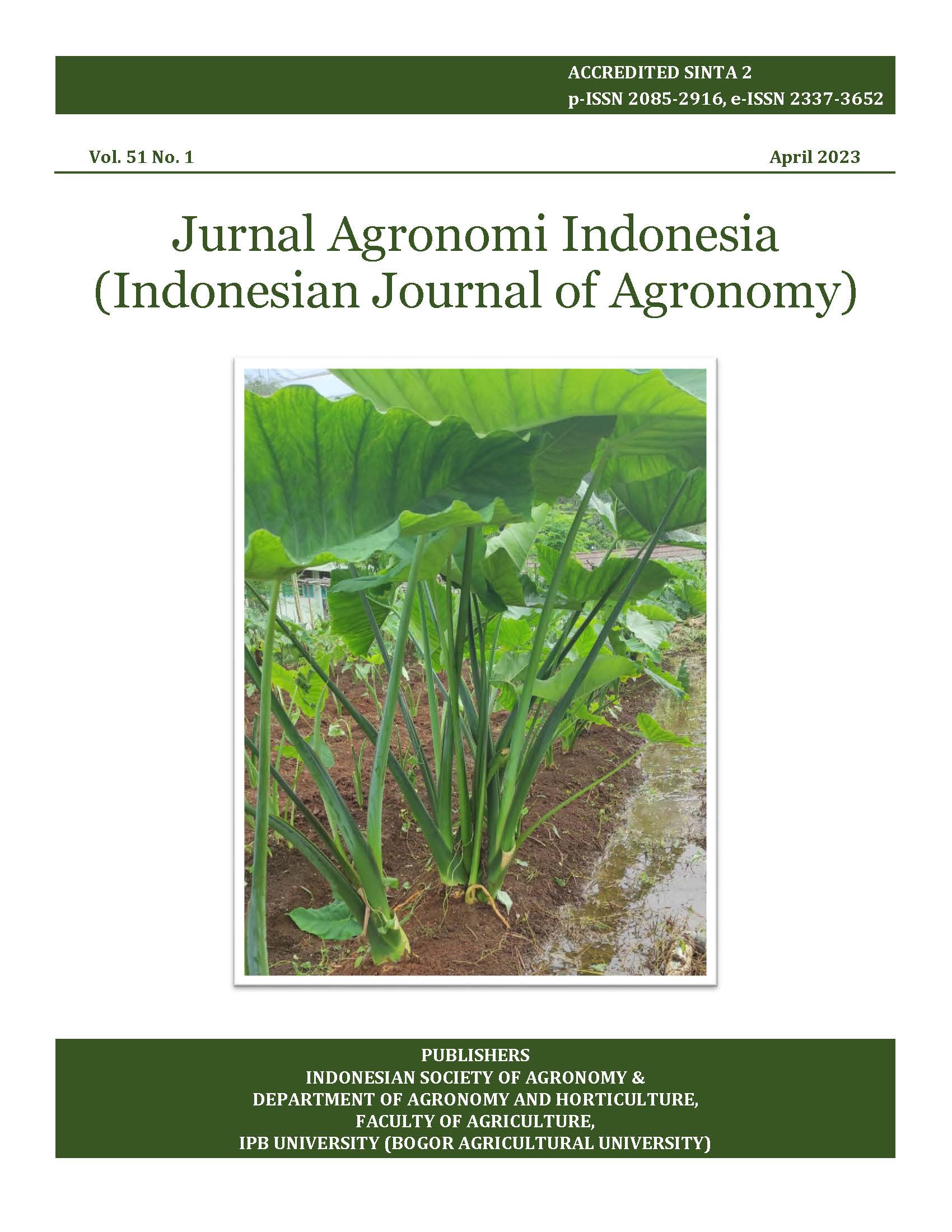Agronomic responses of four garlic genotypes in two different locations
Abstract
Agronomic performance of garlic is speculated strongly affected by genotype ´ environment interaction, however, interaction evaluation is rarely studied in Indonesia. This research aimed to study the agronomic response of four garlic varieties in two different locations. The research was conducted from April to December 2021 using Lumbu Putih, Lumbu Hijau, Lumbu Kuning, and Tawangmangu Baru genotypes grown in two locations, i.e., Lembang (1250 m asl) and Ciwidey (1200 m asl), Bandung, West Java using randomized complete block design with three replications. Results showed that genotypes ´ locations interaction was found for traits: plant height, pseudo-stem stem diameter, number of stomata, weight, and diameter of fresh and dried bulbs. Chlorophyll content (SPAD value) depends on genotype, height of fresh bulbs and percentage of weight loss depending on location, while number of leaves was independently affected by genotype and location. Lumbu Kuning produced the highest average fresh weight with considerable differences in both locations (Lembang: 52.01 g, Ciwidey: 31.87 g) and also had the highest weight of dry bulb when planted in Lembang (24.65 g). Pearson's correlation showed that the strongest positive correlation (r=0.91) was found between the weight of the fresh bulb and pseudo-stem diameter when garlic genotypes were planted in Ciwidey. The present study implies the importance to select suitable genotypes for a particular location.
Keywords: genotype, environment, interaction, SPAD value, stomata, weight loss













